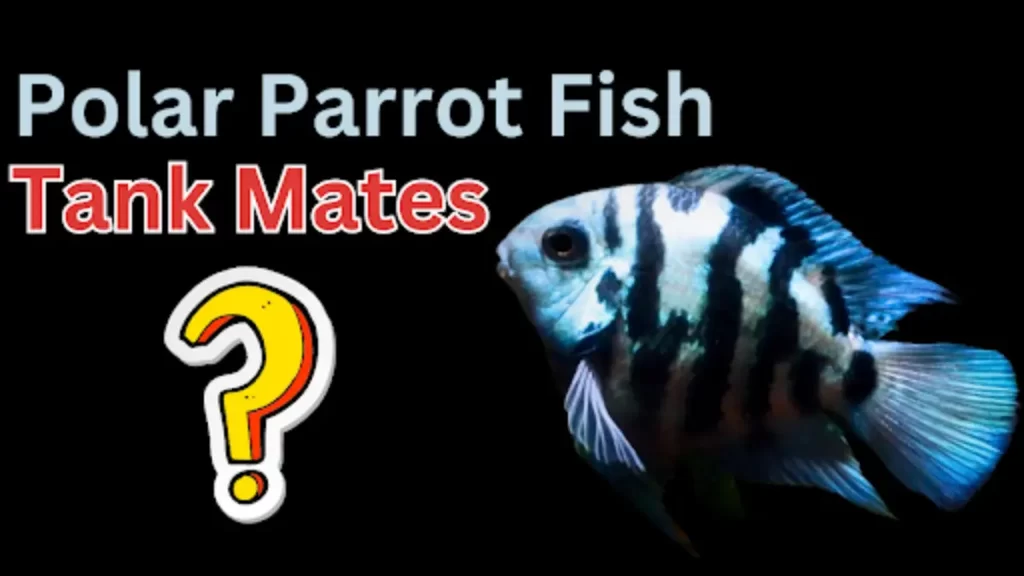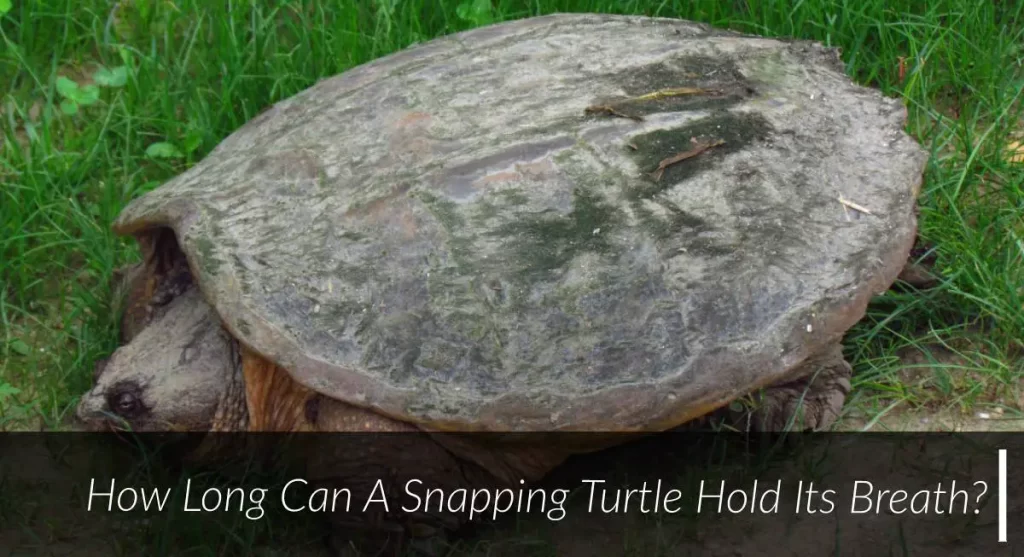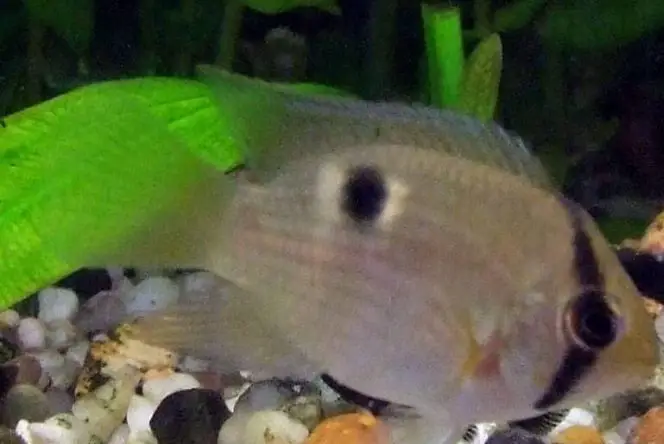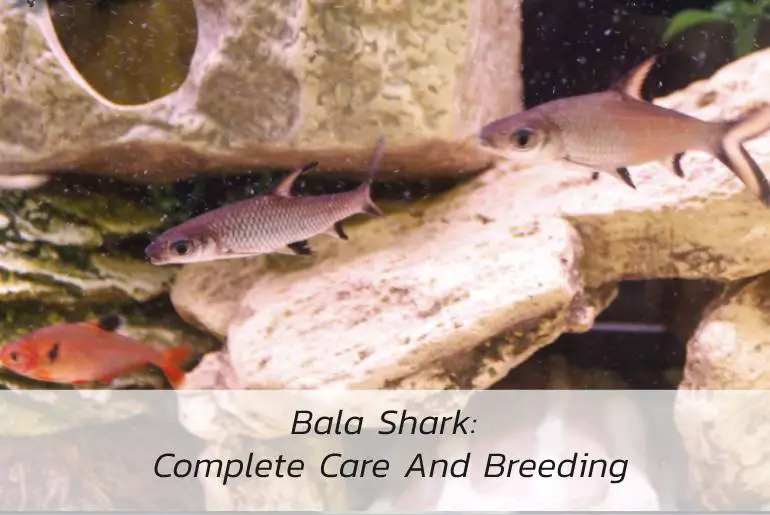The polar parrot cichlid is a unique and popular freshwater fish known for its bright colors and energetic personality. It is a hybrid fish, bred from crossing the blood parrot cichlid with the convict cichlid. As you embark on the journey of caring for these dynamic fish, a crucial consideration arises: who makes the best tank mates for the Polar Parrot fish?
Quick Answer:
Some Cichlids like Parrot Cichlids, Convict Cichlids, Severum Cichlids, and African Rift Lakes Cichlids are the best tank mates for Polar Parrot Cichlids. Moreover, Angel Fish, Siamese Tiger Fish, Tinfoil Barb, Bristlenose Plecos, Silver Dollars, Large Tetras, Cory Catfish, and Albino Walking Catfish are other additional companions that you can consider as tank mates for Polar Parrots.
In this article, we unravel the secrets of ideal companionship, exploring the diverse personalities and compatibility factors that contribute to the creation of a harmonious aquatic community.
Polar Parrot Fish Behavior With Other Fish
Polar parrot fish are known for their intriguing behavior and unique characteristics in the aquarium. While generally considered peaceful, it’s important to note that they can display moments of aggression, especially in certain situations. Understanding their behavior with other fish is crucial for maintaining a harmonious tank environment.
1. Semi Aggressive
Polar Parrot Fish usually get along well with others, but sometimes they can be a bit territorial. This means they like having their own space in the fish tank and might get a bit defensive about it. It’s a bit like having your own room – you might not want anyone barging in!
Now, they’re not as aggressive as some other fish like convict cichlids, but when it comes to defending their space in the tank, they can put up a fight.
2. May Eat Smaller Fish
Polar Parrot Fish can be quite big, and because they like having their own space, they might see smaller fish as snacks – especially if those fish can fit into their mouths. It’s like having a big friend who might accidentally swallow up the tiny snacks in the room.
So, it’s important to choose tank mates that are a good size match and won’t end up as a polar parrot’s accidental lunch.
Best Tank Mates For Polar Parrot Fish
When keeping polar parrot cichlids, choosing suitable tank mates is important to create a harmonious community aquarium. Polar parrots can be semi-aggressive, especially towards smaller fish that may be seen as prey. They also have special care needs, requiring warm water and high-quality foods. With some knowledge of their behaviors and needs, you can pick polar parrot tank mates to bring out their best qualities.
Here I have listed some of the best tank mates for Polar Parrot Fish:
1. Parrot Cichlids
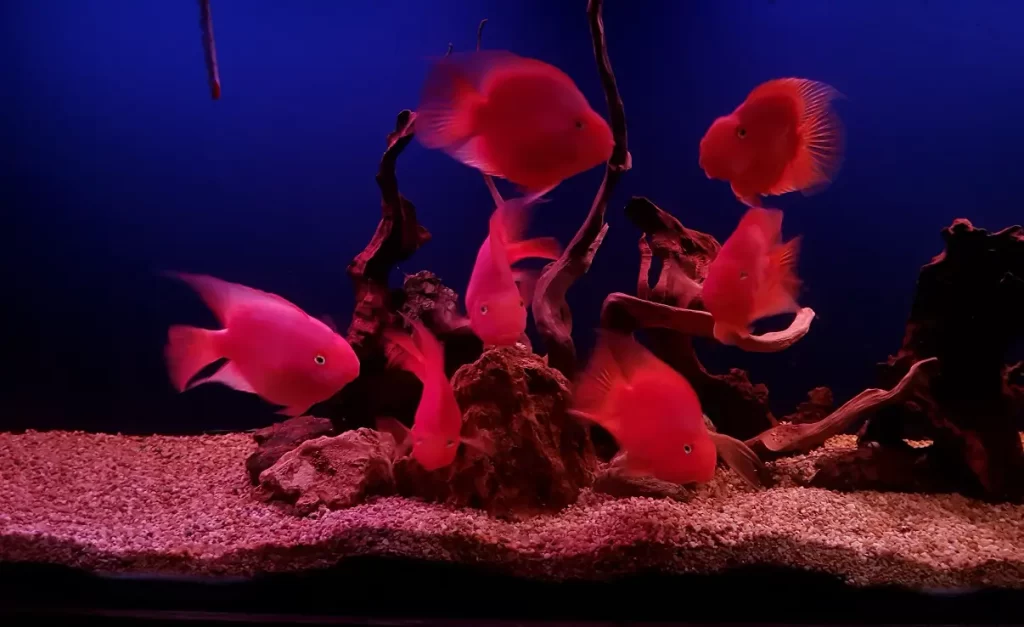
Parrot Cichlids are vibrant and charismatic aquatic companions known for their captivating appearance. With their distinctive shapes and lively colors, these cichlids stand out in any aquarium. Varieties such as red parrot cichlids, jellybean parrots, and spotted parrot cichlids share the same family tree, making them familiar faces in the underwater world.
When it comes to choosing the best tank mate for Polar Parrot Cichlids, other Parrot Cichlids are a top-notch choice. This is because they not only share similar water conditions but also exhibit comparable behavioral traits. The compatibility goes beyond just looks – Parrot Cichlids are generally of similar size, which helps prevent conflicts in the tank.
Moreover, their dietary preferences align, simplifying the feeding routine. Parrot Cichlids have similar basic needs in a tank, creating a harmonious environment for both species. Importantly, their interaction tends to be peaceful; they often go about their business without bothering each other.
2. Convict Cichlids
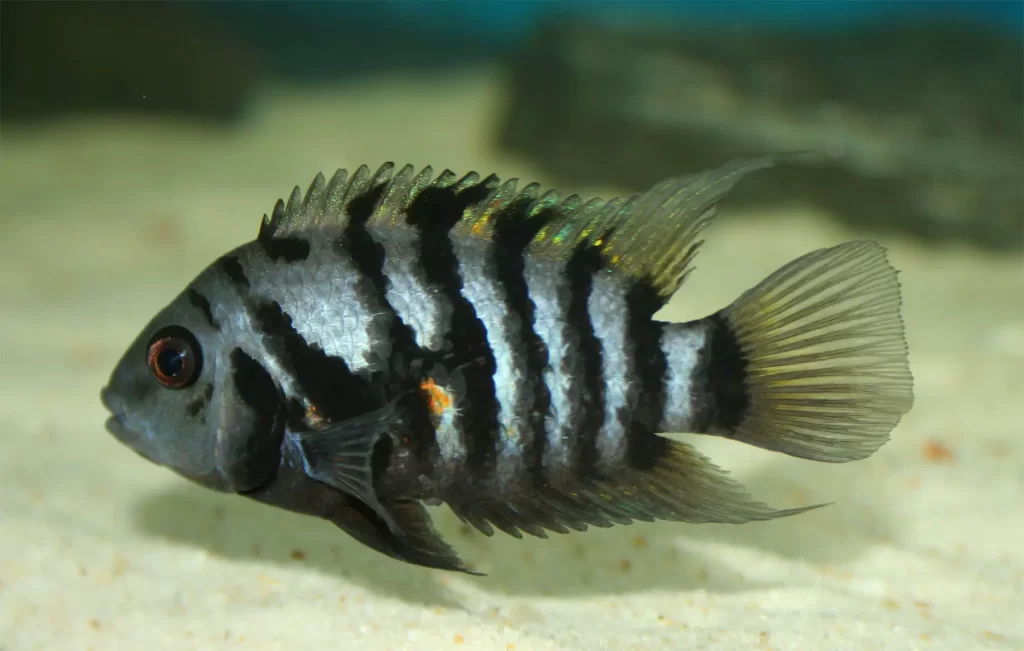
Convict Cichlids, known for their hardy demeanor and distinctive black-and-white stripes, share a close family tie with Polar Parrot Fish. These cichlids exhibit a hardy and resilient nature, making them a notable addition to any aquarium. Their characteristic appearance, marked by bold patterns, adds visual interest to the aquatic landscape.
When seeking the perfect tank mate for Polar Parrot Fish, Convict Cichlids emerge as excellent companions. The familial connection between these species promotes a natural connection, and they tend to cohabitate harmoniously. One notable advantage is the resilience of Convict Cichlids; they can hold their own in the face of any aggression that might arise.
Choosing Convicts of a similar size is key to maintaining a balanced dynamic within the tank. This prevents any individual from being singled out as potential prey. The parallel size ensures a fair playing field, allowing both species to coexist peacefully.
3. Angel Fish
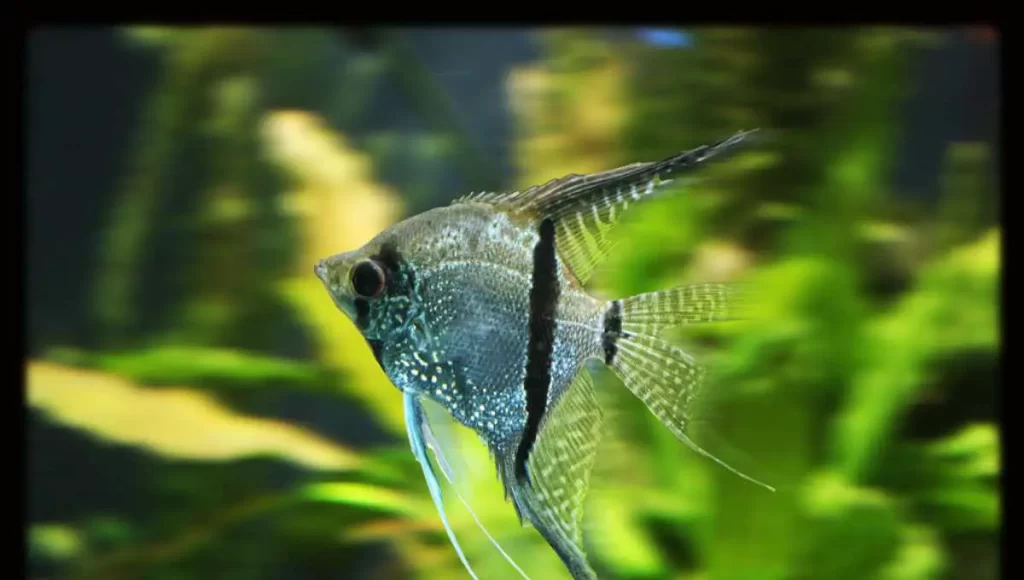
Angel Fish, with their elegant fins and graceful presence, bring a touch of class to any aquarium. Medium-sized varieties of angelfish showcase long, flowing fins, creating a beautiful contrast against the stocky shape and vibrant colors of Polar Parrot Fish. Their calm nature adds a peaceful ambiance to the underwater world.
Medium-sized Angel Fish stand out as excellent companions for Polar Parrot Fish. The contrast of their distinct physical features enhances the visual appeal of the tank. The long, flowing fins of Angel Fish create a striking contrast with the bold and sturdy appearance of Polar Parrot Fish.
What makes this pairing particularly successful is the peaceful nature of Angel Fish, which complements the temperament of Polar Parrot Fish. However, it’s essential to be mindful of the size. Opt for medium-sized angels, as smaller species might be more susceptible to bullying.
4. Severum Cichlids
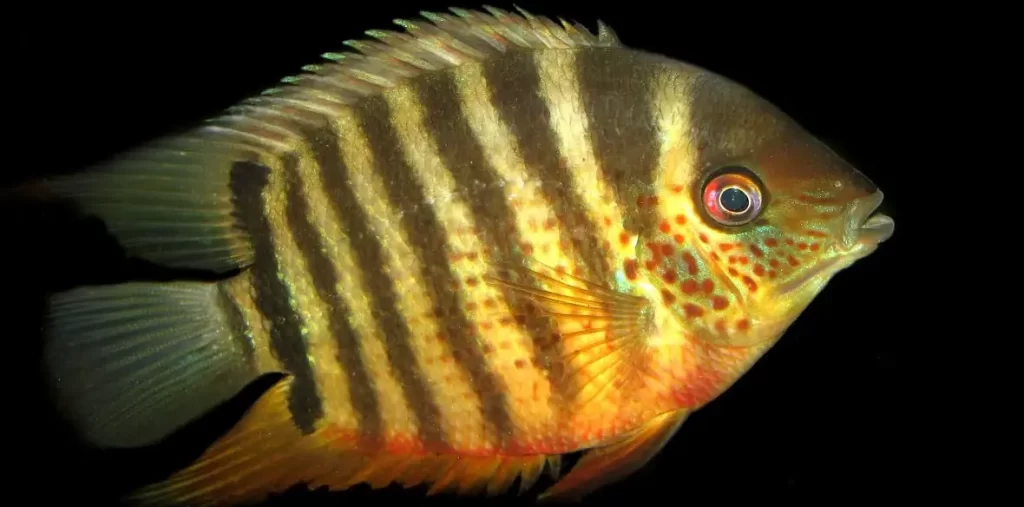
Severum Cichlids, known for their impressive size of up to 10 inches, bring a stately presence to the aquarium. These larger cichlids exhibit a majestic appearance, contributing to the overall grandeur of the aquatic environment. Their calm and mellow temperament adds a soothing element to the underwater community.
For those seeking to moderate the potential aggression of Polar Parrot Fish, Severum Cichlids emerge as valuable allies. Their larger size serves as a natural moderating factor, creating a more balanced dynamic within the tank. The mellow disposition of Severums complements the occasionally territorial nature of Polar Parrot Fish.
An additional advantage is their shared preference for similar water conditions. Both Severum and Polar Parrot Fish thrive in comparable environments, making it easier to maintain consistent tank parameters.
5. Siamese Tiger Fish

Siamese Tiger Fish, with their striking black and white bands, introduce a captivating visual element to the aquarium. Their unique coloration contrasts beautifully with the bold and vibrant hues of Polar Parrot Fish, creating a visually dynamic underwater landscape. These sociable barbs are known for their distinctive appearance and interactive behavior.
When seeking a tank mate that adds both visual interest and a sociable dynamic to the Polar Parrot community, Siamese Tiger Fish fits the bill. Siamese Tiger Fish are generally sociable and tend to keep to themselves. While some chasing might occur, especially with plenty of space, it’s usually harmless and contributes to the interactive nature of the aquarium. Providing sufficient room for exploration can help ensure a harmonious coexistence between these two species.
6. Tinfoil Barb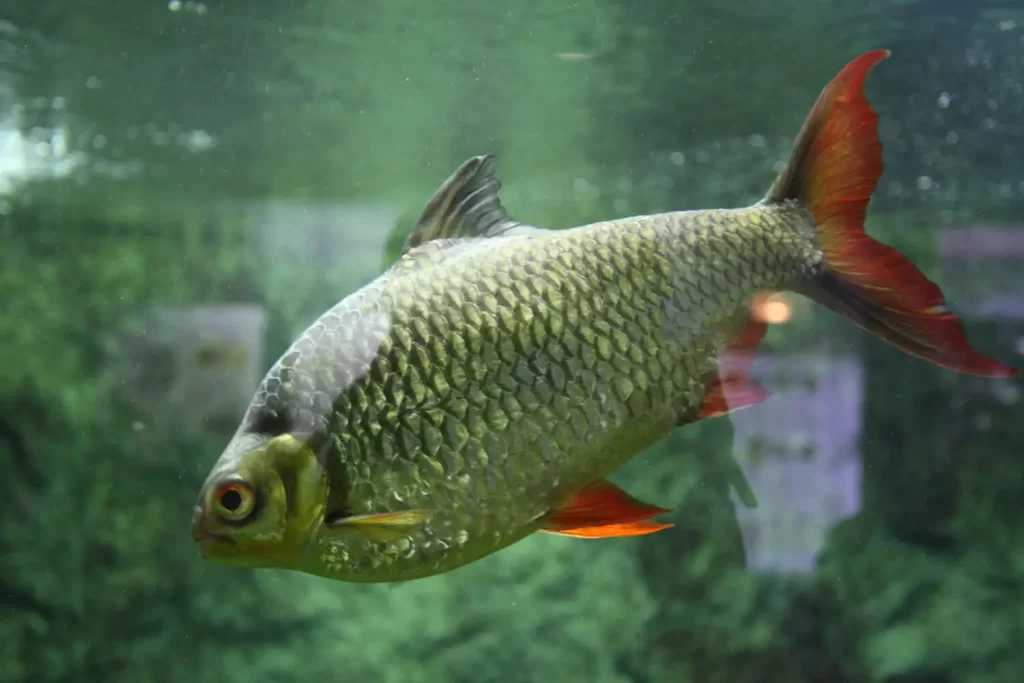
Tinfoil Barbs, known for their eye-catching metallic sheen and streamlined bodies, bring a touch of elegance to the aquarium. Their reflective scales create a shimmering effect, adding a dynamic element to the underwater landscape. These sociable barbs boast a distinctive appearance that complements the bold colors of Polar Parrot Fish.
In a spacious tank, Tinfoil Barbs prove to be excellent companions for Polar Parrot Fish. Their active behavior and constant movement bring a lively atmosphere to the aquatic community.
An additional advantage is the size factor – Tinfoil Barbs grow large enough to avoid being seen as potential prey by Polar Parrot Fish. This ensures a balanced and harmonious coexistence between the two species.
7. Bristle Nose Plecos
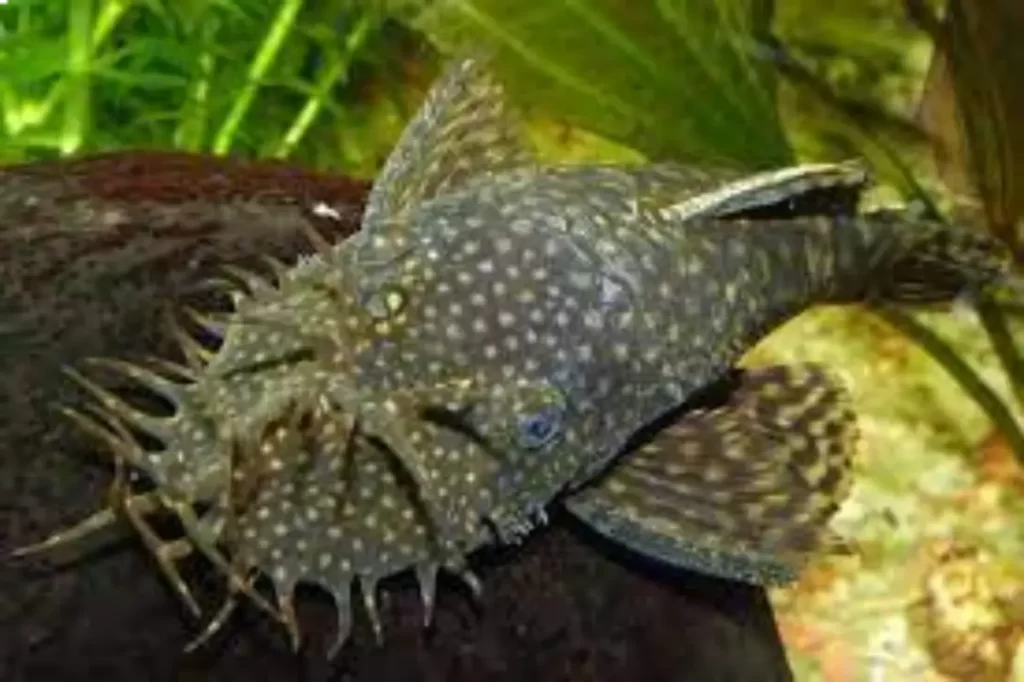
Bristle Nose Plecos, known for their compact size and distinctive bristly mouths, serve as active bottom-dwelling members of the aquarium community. These plecos bring not only practical benefits, such as algae control but also add fascinating textures to the underwater landscape. Their small size, staying under 8 inches, makes them a practical and visually appealing addition to the tank.
When considering tank mates that contribute to the overall health of the aquarium, Bristle Nose Plecos emerge as valuable allies for Polar Parrot Fish. These plecos are renowned for their algae-eating prowess, helping to maintain a clean and balanced environment.
The bristly mouths of Bristle Nose Plecos add interesting textures to the tank, creating a visually dynamic space. Additionally, their peaceful nature makes them compatible with the occasionally territorial Polar Parrot Fish.
8. African Rift Lake Cichlids
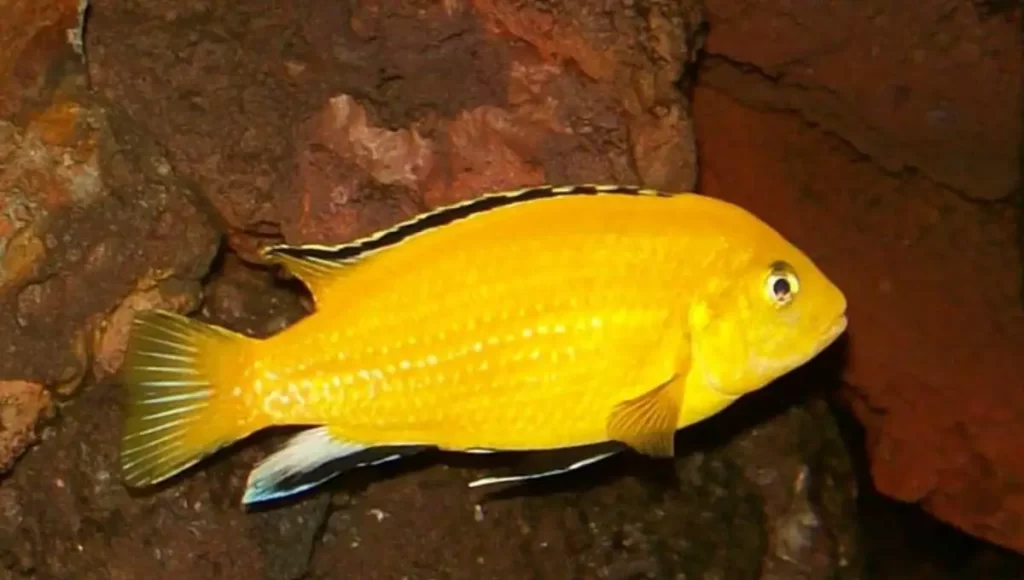
African Rift Lake Cichlids, a diverse and colorful group, bring a vibrant and lively presence to the aquarium. Varieties such as yellow labs, acei cichlids, and peacocks showcase an array of hues, creating a visually stunning underwater spectacle. Their unique patterns and dynamic colors contribute to the overall beauty of the aquatic community.
These cichlids share a preference for warm and alkaline water, creating a harmonious environment that supports the well-being of both species. Yellow labs, acei cichlids, and peacocks, among other African cichlids, have a reputation for getting along nicely with Polar Parrot Fish. The compatibility extends beyond water conditions to their overall temperament, ensuring a peaceful coexistence within the tank.
9. Silver Dollars
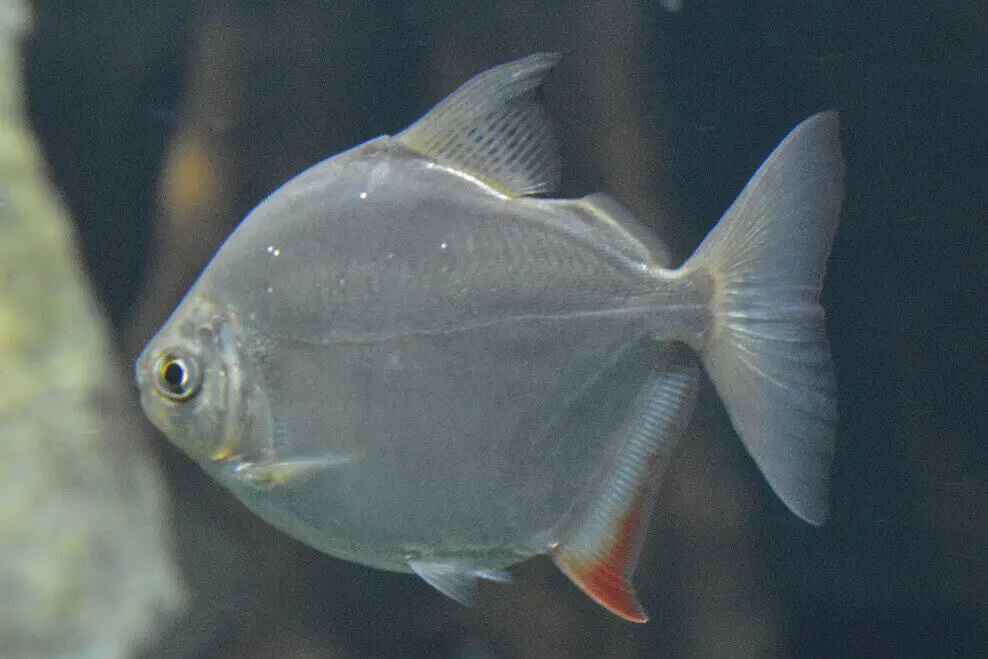
Silver Dollars, with their energetic demeanor and distinctive silver appearance, add a lively and dynamic element to the top portion of the aquarium. These fish are known for their large size and fast swimming, creating an engaging spectacle as they navigate the upper waters. The metallic shine of Silver Dollars contributes to the overall visual appeal of the aquatic environment.
Their energetic nature and rapid swimming abilities make them adept at handling any potential aggression from Polar Parrot Fish. The large size of Silver Dollars adds a sense of scale and brilliance to the tank.
Beyond their practical compatibility, the metallic sheen of Silver Dollars complements the bold colors of Polar Parrot Fish, creating a harmonious and visually striking underwater landscape. The contrast between the energetic top-dwellers and the vibrant parrots below adds to the overall appeal of the aquatic community.
10. Large Tetras

Large Tetras, exemplified by species like Congo Tetras and Emperors, introduce a sense of grace and unity to the mid-levels of the aquarium. These tetras exhibit vibrant colors and streamlined shapes, creating a visually appealing presence as they navigate the aquatic space. Their larger size distinguishes them from their smaller counterparts.
Congo Tetras and Emperors, with their robust size, are better equipped to coexist harmoniously with Polar Parrot Fish. The larger tetras provide an elegant contrast to the bold colors and distinctive shapes of the parrots.
It’s important to note that smaller tetras may face challenges when housed with Polar Parrot Fish, potentially becoming targets for aggression. To mitigate this, keeping schools of 6 or more tetras helps reduce individual stress and spreads any aggression within the group.
11. Cory Catfish
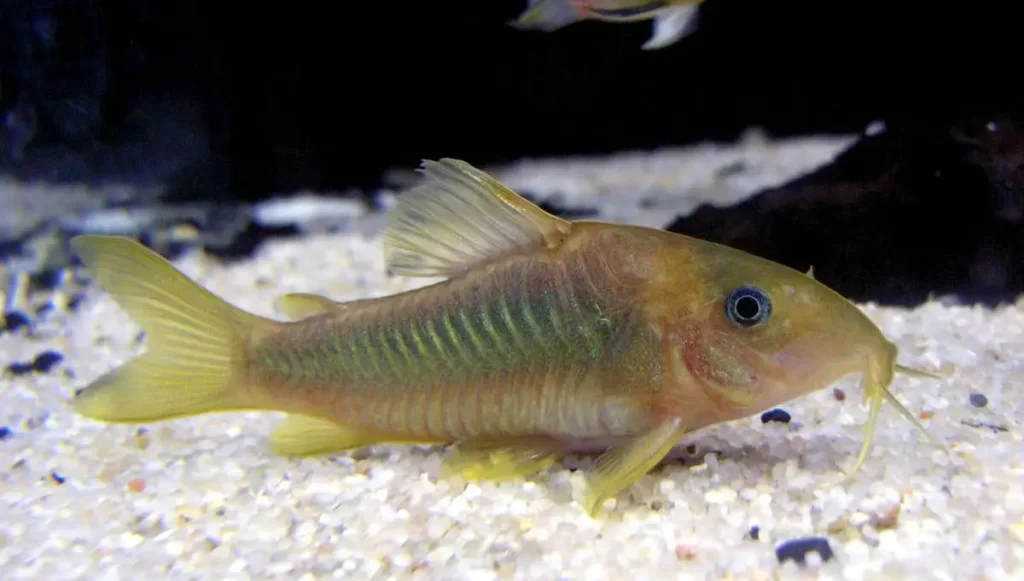
Cory Catfish, with their charming appearance and lively behavior, bring a sense of activity to the lower regions of the aquarium. These small catfish are known for their distinctive barbels, which resemble tiny whiskers, and their playful antics as they navigate the substrate. Their compact size and sociable nature make them delightful additions to the aquatic community.
Their small size and peaceful demeanor make them well-suited to coexist with the occasionally territorial Polar Parrot Fish. Cory Catfish also contribute to the cleanliness of the tank by foraging for leftover food and detritus, serving as a valuable clean-up crew.
Their playful nature and the unique way they swim in groups add a lively element to the lower levels of the aquarium. Additionally, the size compatibility ensures that Cory Catfish are not perceived as potential prey, promoting a harmonious relationship with Polar Parrot fish in the tank.
12. Albino walking catfish
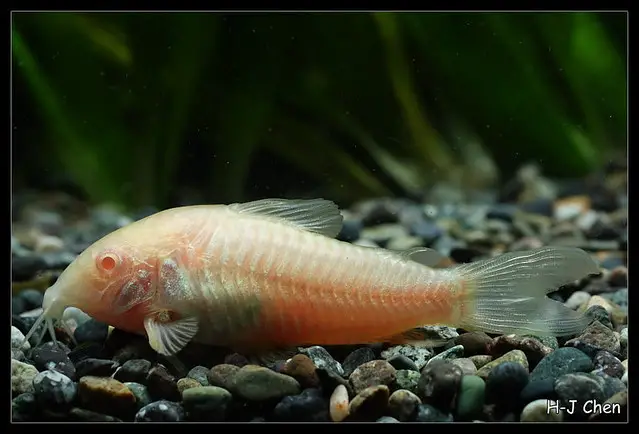
Albino Walking Catfish, distinguished by their pale, almost fine appearance, add a touch of uniqueness to the aquatic landscape. These catfish are known for their whisker-like barbels and the ability to move across the substrate like walking. Their albino coloration, lacking pigmentation, creates a striking contrast to the vibrant colors of Polar Parrot Fish.
While Albino Walking Catfish can coexist with Polar Parrot Fish, there are some considerations to keep in mind. These catfish can grow to a significant size, so it’s essential to ensure the aquarium can accommodate their needs. Additionally, Albino Walking Catfish are bottom-dwellers and may not interact extensively with the more active Polar Parrot Fish.
Their nocturnal habits mean they may be more active during the night. Care should be taken to provide hiding spots and suitable conditions for both species. It’s crucial to monitor their growth and behavior to ensure a harmonious environment.
Bad Tank Mates For Polar Parrot Fish
While selecting suitable companions for your Polar Parrot Fish is crucial, it’s equally important to identify species that may lead to conflicts or stress. In this section, we’ll explore fish that are less compatible with Polar Parrot Fish, helping you steer clear of potential issues in your aquarium.
Here I have listed some of the fish that you should avoid keeping with Parrot Polar Fish:
1. Oscars
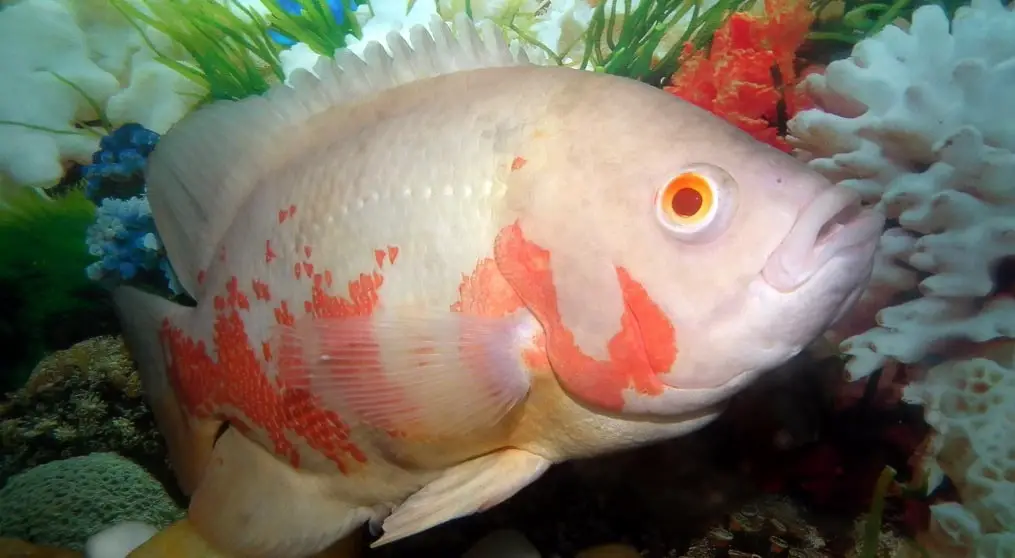
Oscars, characterized by their strong build and distinctive markings, are cichlids known for their aggressive nature. They boast a powerful presence in the aquarium, often displaying dominant behavior.
When considering tank mates for Polar Parrot Fish, it’s essential to note that Oscars might not be the best companions. Their aggressive tendencies can lead to chasing and nipping, particularly targeting the long, flowy fins of Polar Parrot Fish. To avoid stress and potential conflicts, it is recommended to keep Oscars and Polar Parrot Fish in separate tanks or use a tank divider to divide them within the tank allowing each species to thrive in a more suitable environment.
2. Guppies
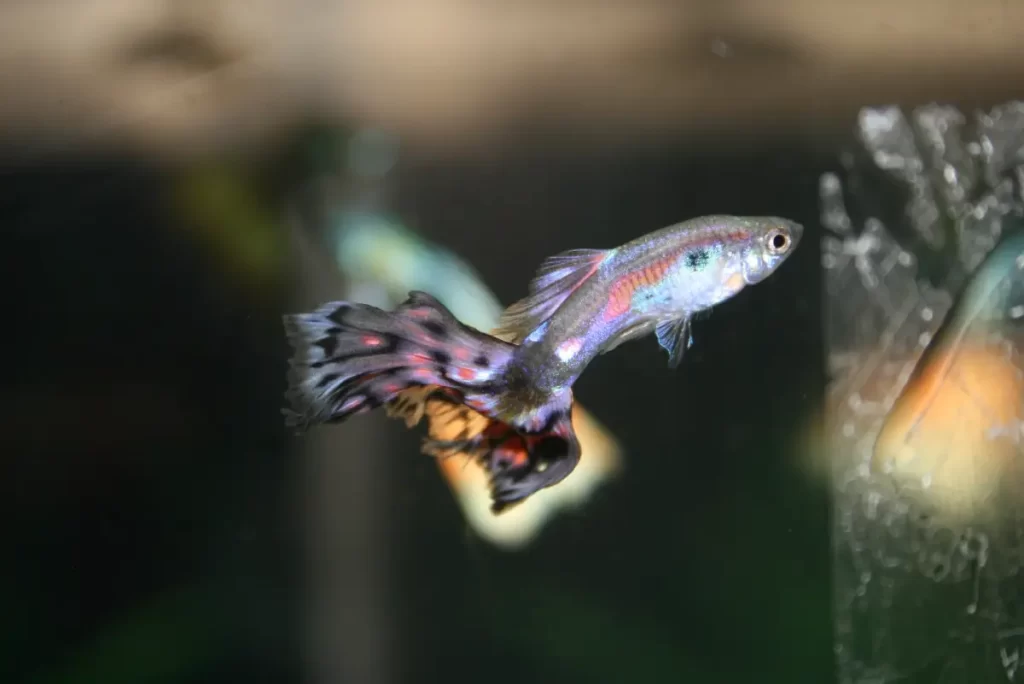
Guppies, recognized for the striking beauty of their long and delicate tails, are small and colorful freshwater fish. They are often admired for their vibrant hues and graceful appearance.
While guppies bring charm to the aquarium, their delicate nature poses a challenge when paired with Polar Parrot Fish. The pretty, long tails of male guppies make them particularly vulnerable to being viewed as potential snacks by the parrot cichlids. To ensure the safety and well-being of your guppies, it’s advisable to avoid mixing them with Polar Parrot Fish, creating a more secure environment for these graceful freshwater companions.
3. Platies
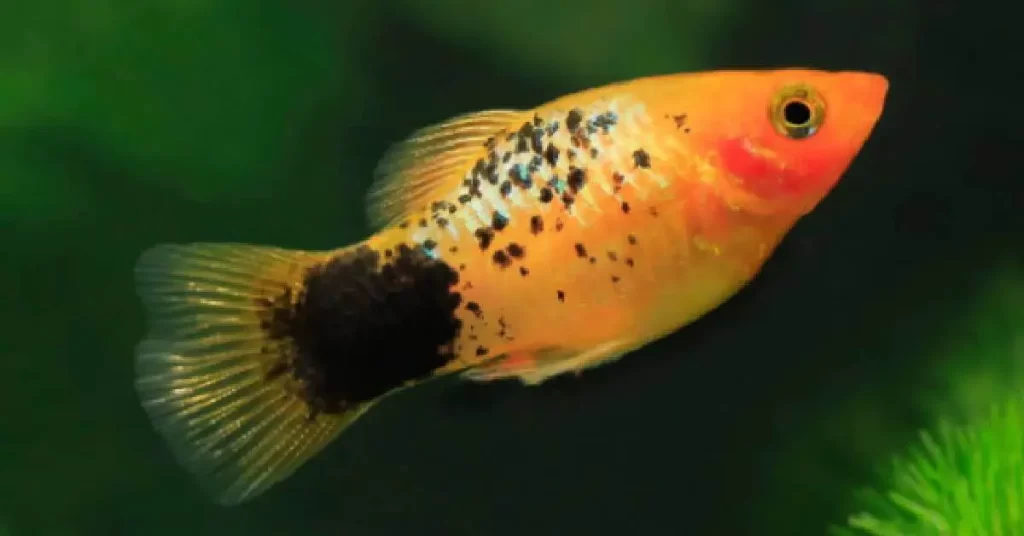
Platies, characterized by their vibrant colors and small size, are popular freshwater fish often chosen for their lively personalities. They add a playful and colorful element to community aquariums.
The playful nature of parrot cichlids can lead to nipping and aggression directed at these smaller companions. Additionally, platies prefer slightly cooler water temperatures, creating a potential mismatch in environmental preferences. To prevent undue stress and ensure the well-being of your Platies, it’s advisable to avoid mixing them with Polar Parrot Fish.
4. Small Tetras

Small tetras, such as neon tetras and ember tetras, are delicate and colorful freshwater fish that add a vibrant and lively dimension to aquariums. Their small size and schooling behavior make them popular choices among aquarium enthusiasts.
When considering tank mates for Polar Parrot Fish, caution is advised when it comes to small tetras under 2 inches in size. Delicate species like neons and embers may become targets for parrot cichlids, potentially leading to them being viewed as prey. To ensure the safety of your tetras, it’s recommended to stick to larger tetra varieties that are less likely to be considered food by the parrot cichlids.
5. Fancy Goldfish
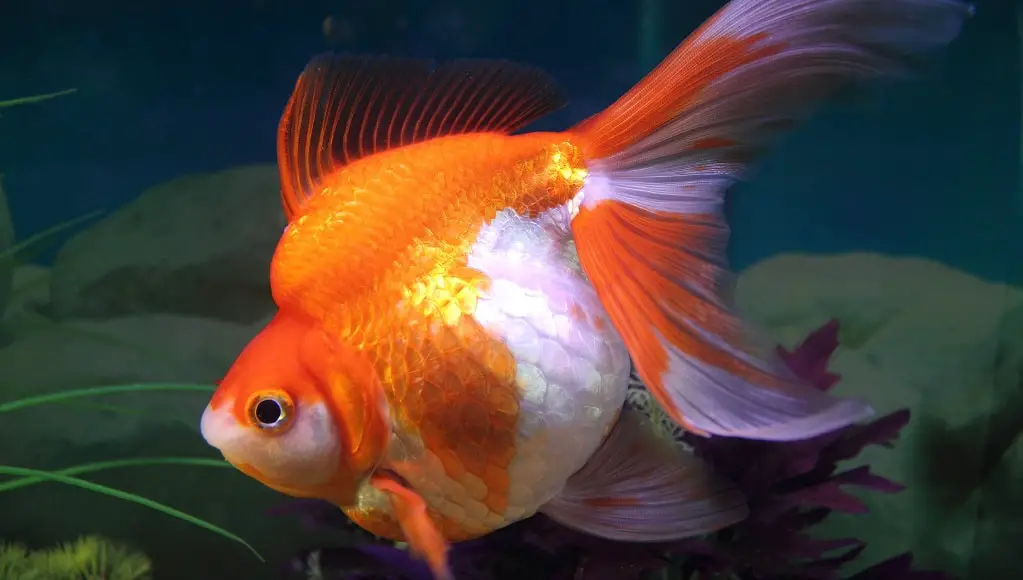
Fancy goldfish, with their distinctive shapes and vibrant colors, are popular freshwater fish known for their ornamental beauty. Their elegant fins and unique patterns make them stand out in aquariums.
The compatibility between fancy goldfish and Polar Parrot Fish is hindered by their distinct water temperature requirements. Fancy goldfish thrive in cooler temperatures, typically around 65°F, while Polar Parrot Fish prefer warmer waters, ranging from 72-82°F. This significant difference in preferred temperatures makes them incompatible tank mates.
6. Crayfish
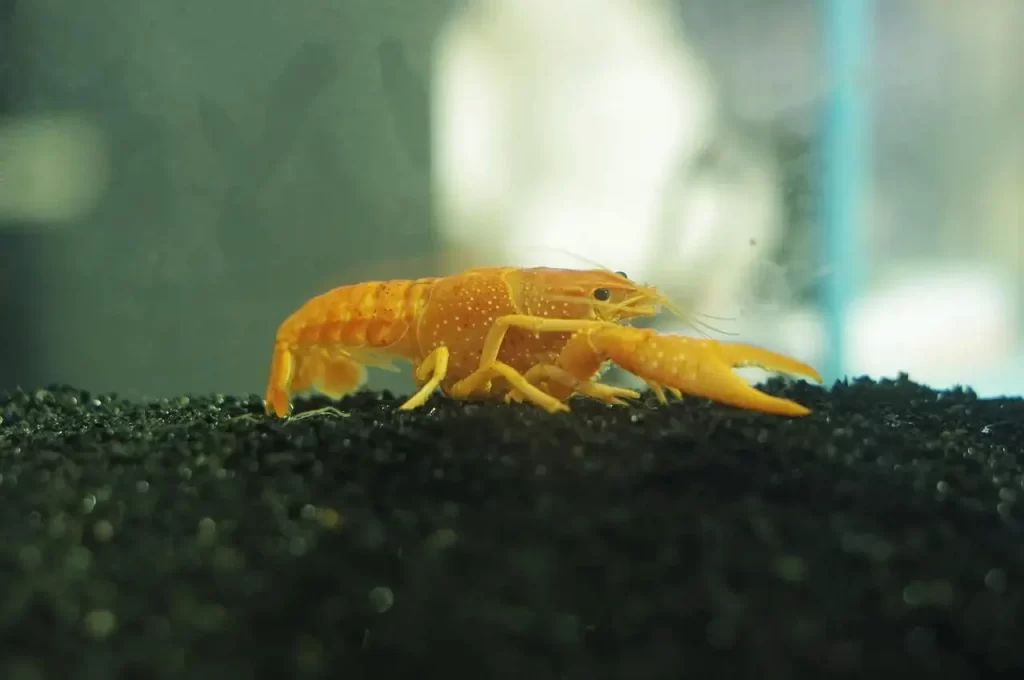
Crayfish, known for their distinctive claws and freshwater habitat, are crustaceans that add a unique element to aquariums. Their fascinating behavior and hard exoskeletons make them interesting to observe.
Introducing crayfish to a tank housing Polar Parrot Fish poses risks, especially during the nighttime hours. Large crayfish, being predatory, may pose a threat by attacking sleeping parrot cichlids, especially juveniles. The nocturnal nature of crayfish enhances the likelihood of such encounters.
7. African Mbuna
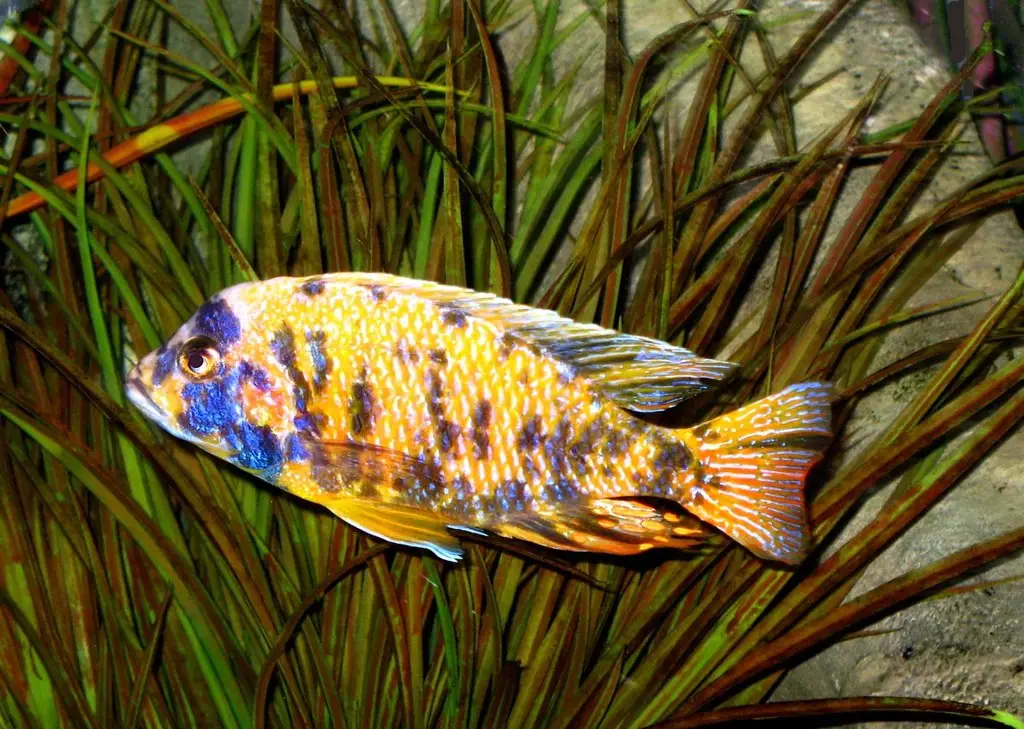
African Mbuna cichlids, exemplified by aggressive varieties like kenyiis, are known for their striking colors and assertive behavior. These cichlids often exhibit vibrant patterns and are popular choices in certain aquarium setups.
When considering tank mates for Polar Parrot Fish, caution is warranted with aggressive Mbuna species. Mbuna cichlids, particularly the likes of kenyiis, have a propensity for relentless chasing and may terrorize more passive parrot cichlids. The aggressive behavior exhibited by Mbuna cichlids creates an unsuitable environment for the typically peaceful Polar Parrot Fish.
Tank Setup Tips For Polar Parrot Fish Tank Mates
Ensuring a thriving and harmonious aquatic environment involves more than just choosing suitable tank mates. In this section, we’ll delve into the essential tank setup tips tailored to meet the diverse needs of Polar Parrot Fish and their companions. From water conditions to decorations, understanding the necessary elements for a well-balanced tank ensures the optimal health and happiness of every fish.
1. Tank Size
The foundation of a successful tank setup for Polar Parrot Fish and their companions begins with the right tank size. A recommendation of a 75-gallon tank or larger is emphasized, ensuring ample space for the inhabitants to coexist comfortably. This generous tank size not only accommodates the energetic nature of Polar Parrot Fish but also provides room to introduce compatible tank mates. The spacious environment encourages natural behaviors and helps prevent territorial conflicts, contributing to a harmonious and thriving aquatic community.
2. Power Filter
To maintain pristine water conditions in a Polar Parrot Fish tank, a robust power filter is essential. Opt for a filter with a rating of 2-3 times the tank size to effectively handle the waste produced by cichlids. An excellent example is the “Marineland Penguin Bio-Wheel Power Filter,” known for its efficiency in mechanical and biological filtration. A powerful filter ensures the removal of impurities, promotes water clarity, and contributes to a healthy aquatic ecosystem. Regular maintenance of the filter guarantees its optimal performance, safeguarding the well-being of Polar Parrot Fish and their tank mates.
3. Heater
To cultivate a comfortable and consistent environment for Polar Parrot Fish and their tank mates, the inclusion of a reliable heater and thermometer is crucial. Aim to maintain the water temperature within the range of 75-82°F, providing an ideal climate for the diverse species in the aquarium. An excellent example of a adjustable heater is the “Aqueon Aquarium Fish Tank Preset Heater,” known for its accuracy and ease of use without needing a thermometer. The combination of a heater and thermometer ensures that the aquatic residents enjoy a cozy habitat, promoting their overall health and vitality. Regular monitoring of temperature levels guarantees a stable and optimal living environment for Polar Parrot Fish and their companions.
3. pH
Creating an environment that suits the preferences of Polar Parrot Fish and their tank mates involves maintaining an appropriate pH level. Aim for slightly alkaline water within the range of pH 7.5-8.5 to support the well-being of these cichlids. If adjustments are necessary, options such as crushed coral or pH-adjusting chemicals can be employed. A reliable tool for monitoring and adjusting pH is the “API pH TEST & ADJUSTER KIT,” ensuring precision in maintaining optimal water conditions. By managing pH levels, you contribute to the health and vitality of Polar Parrot Fish along with its tank mates, fostering a thriving aquatic community.
4. Plants & Decor
The choice of plants and decor plays a pivotal role in shaping the environment for Polar Parrot Fish and their tank mates. Opt for smooth gravel and rocks to create a substrate that is gentle on fins, avoiding sharp decorations that may cause harm. Whether live or plastic, incorporating plants into the aquarium provides essential hiding spots, reducing potential aggression among the inhabitants. This thoughtful arrangement not only enhances the aesthetic appeal of the tank but also contributes to the well-being and behavioral enrichment of Polar Parrot Fish. A carefully curated landscape ensures a safe and stimulating habitat, promoting a harmonious and visually pleasing aquatic community.
5. Lighting
Proper lighting is a key factor in maintaining the vibrant colors of Polar Parrot Fish and their tank mates. Opt for moderate lighting that highlights the hues of these captivating fish without causing excessive stress. Aim for around 8-10 hours of light per day to mimic a natural day-night cycle. Consider using specialized aquarium lighting, such as the AQUANEAT LED Aquarium Light, to provide the ideal spectrum for promoting the health and vibrancy of your aquatic companions. Strategic lighting not only enhances the visual appeal of the tank but also contributes to the overall well-being of the inhabitants.
Conclusion
In the dynamic realm of aquarium keeping, the selection of tank mates for Polar Parrot Fish is a crucial art. Each choice, from the vibrant Parrot Cichlids to the energetic Tinfoil Barbs, weaves a unique tapestry in your underwater world. Understanding behaviors and compatibility ensures a peaceful coexistence, allowing each fish to express its distinct qualities.
While some companions complement the Polar Parrot’s charm, others, like aggressive Oscars or delicate Guppies, may introduce challenges. The success of your aquatic community extends beyond fish selection. Attention to tank setup, water conditions, and lighting refines the habitat, fostering an environment where every resident can thrive.
Happy fish-keeping!

